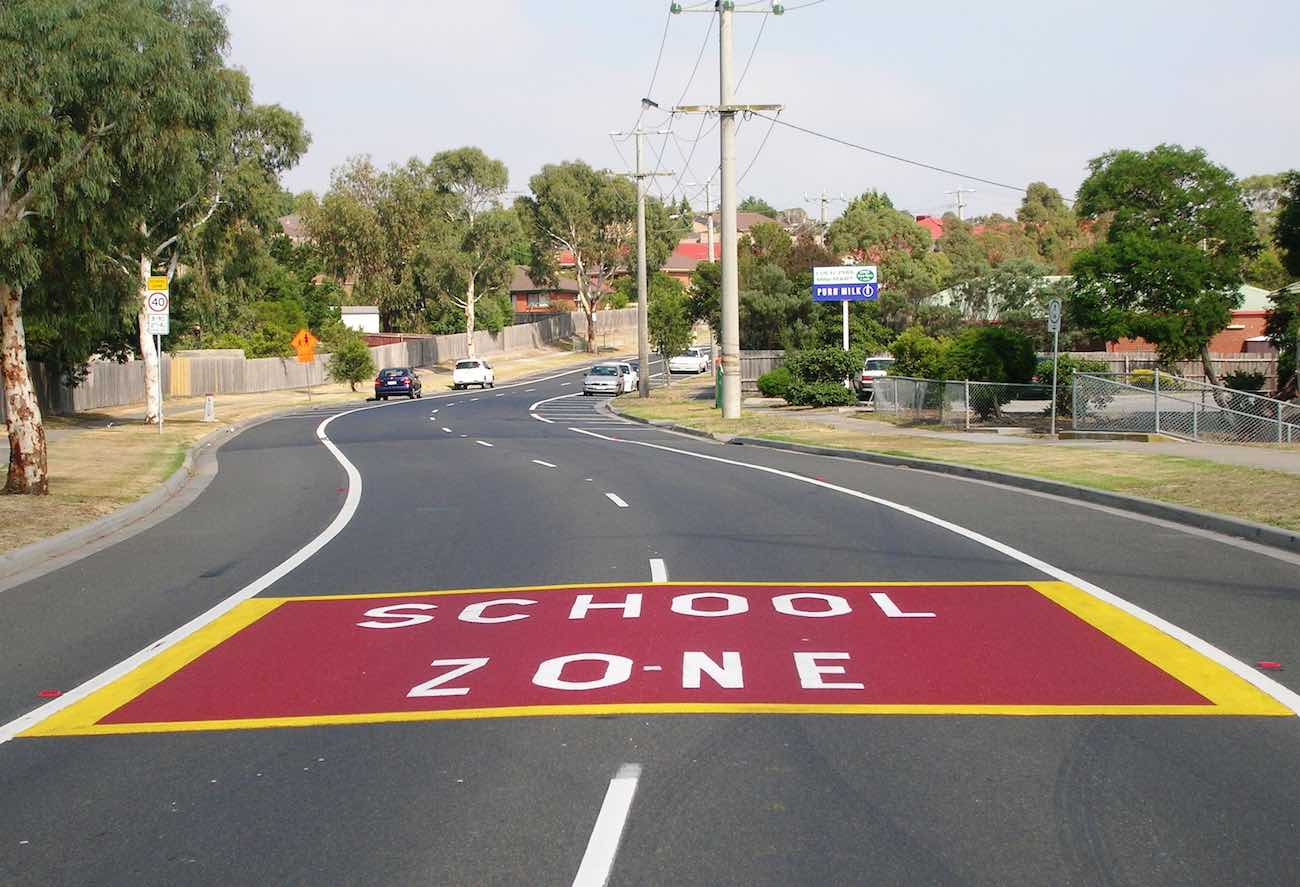
Coloured Surface Treatments (CST) are used to delineate different parts of the road surface using a colored binder and fine, uniformly graded aggregate. CST is typically used in the following applications:
Since surfaced roads account for 30 to 50% of the user’s visual field, the correct choice of their material and color occupies a strategic step in the design. Colored surfaces may take the form of the overlay when the colored material is placed on top of the road surface or embedded when the colored material is mixed directly into the road.
In the State of Queensland in Australia, the Department of Transport and Main Roads uses Technical Specification MRTS110 Coloured Surface Treatments to regulate the requirements for construction of CST for road surfaces.
In this article, Global Road Technology evaluates CSTs based on Queensland specifications.
The materials used in the CST shall be consistent with those nominated for the registered product. No substitution of materials is allowed. The binder shall be a two or more component thermosetting resin (or alternative binder type) that has been certified by the TIPIS Product Evaluation Panel and suitably pigmented to provide the necessary color in the finished surface coating and provide adhesion to the aggregate and substrate. Thermoplastic materials and waterborne paints are not acceptable. Aggregate shall be hard, tough, durable, moderately sharp grains of pre-coated natural stone or synthetic material of uniform quality and grading, free of dust, dirt, and other deleterious matter.
The color shall be an approximate match based on Standard AS 2700 with the following colors applicable:
The technical specification that regulates the requirements for construction of CSTs for road surfaces in Queensland, Australia is MRTS110. The standard test methods used in the technical specification include:
The minimum testing frequency for color is 1 test per lot. Skid resistance (British pendulum number) and surface texture are tested immediately after installation and curing with the first lot having to undergo 3 tests and other lots to be tested if only required and ordered by the administrator. During the defect liability period, testing is done if only required and ordered by the administrator.
The use of CSTs has been promoted in recent years to improve road user safety and to enhance the reorganization and aesthetic of the urban environment. However, there are prerequisites for CST (and its components) shall be:
Like any other road, CSTs undergo environmental, and traffic-induced changes in appearance, faster than the traditional ones. A pigment’s color durability is often susceptible to sunlight at high temperatures, aggression from chemical products, and the dynamic action of vehicle tires. The CSTs are extremely sensitive to physical and mechanical stresses. A correct CST mix-design both in materials choice and ingredients dosage should be properly calibrated based on the road end-use and of the prevailing climatic conditions to ensure color consistency throughout the road lifetime.
References
https://www.sciencedirect.com/science/article/pii/S2095756421000416
https://www.sciencedirect.com/science/article/abs/pii/S0950061819303952
https://www.sciencedirect.com/science/article/pii/S2352146521004968
Your feedback is important to us. If you enjoyed reading this Global Road Technology industry update and found it informative, please let us know by leaving a REVIEW.
Are environmental regulations, health and safety concerns or potential profit loss a concern right now?
Contact Us Now